Add Video Collaboration: Overview

There are three main types of video collaboration activities in TILE. Each activity type can be used for immersive practice and each has distinctive features that may be best suited to your learning objectives.
Here’s a brief description to bring you up to speed on each activity type:
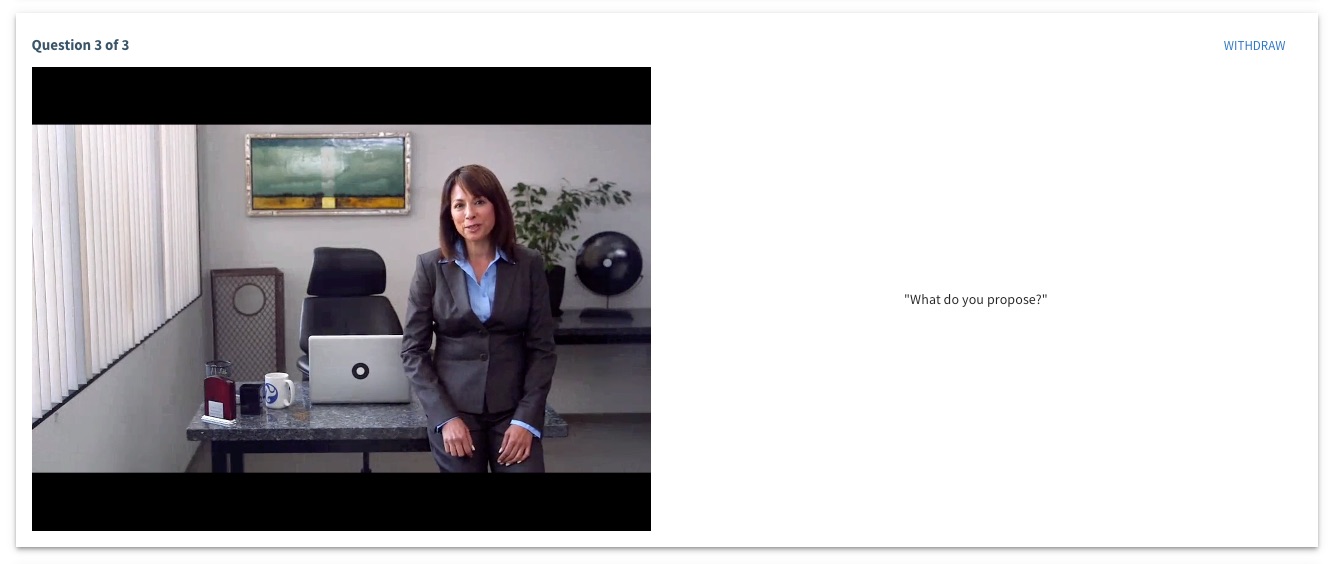 Question & Answer – the learner is presented with a series of prompts and given a set amount of time to respond. The learner only has one opportunity to answer each prompt, replicating the high-stakes environment of being asked questions in a face-to-face setting.
Question & Answer – the learner is presented with a series of prompts and given a set amount of time to respond. The learner only has one opportunity to answer each prompt, replicating the high-stakes environment of being asked questions in a face-to-face setting.
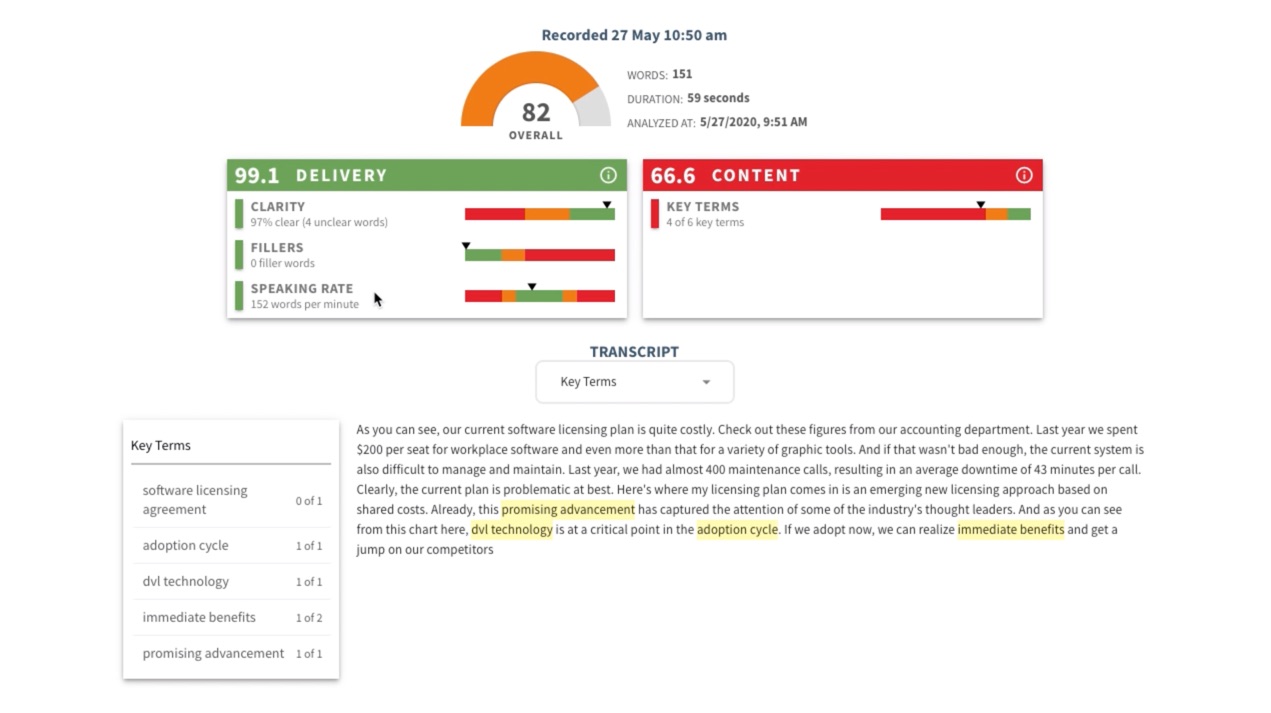 Individual Project – learners record or upload a video of themselves presenting on a topic or demonstrating a specific skill. With the screenshare feature, learners can also enhance their project with visual aids. This activity type includes an Artificial Intelligence (AI) “Auto Analysis” feature.
Individual Project – learners record or upload a video of themselves presenting on a topic or demonstrating a specific skill. With the screenshare feature, learners can also enhance their project with visual aids. This activity type includes an Artificial Intelligence (AI) “Auto Analysis” feature.
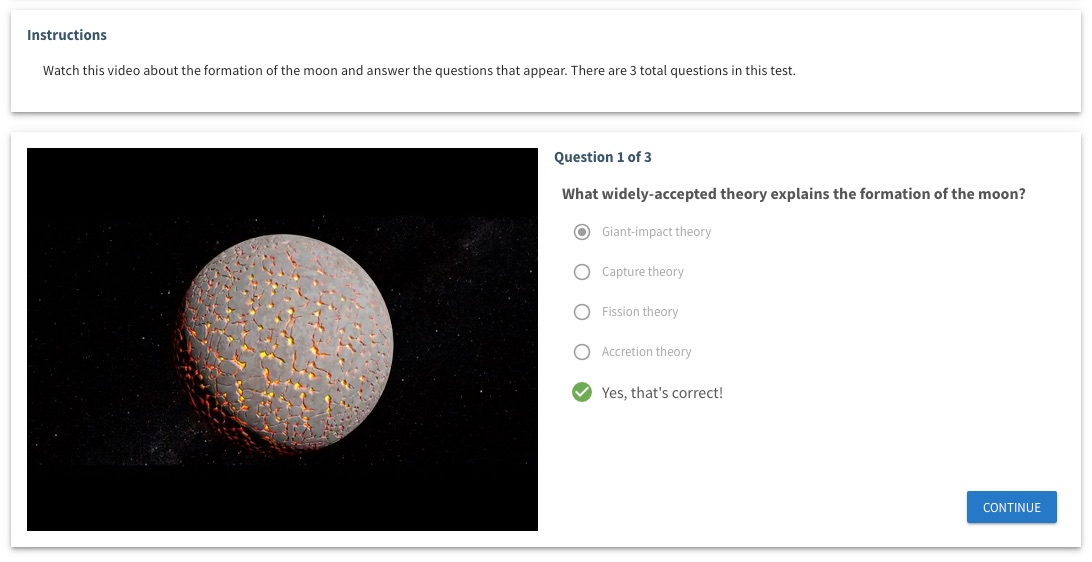 Interactive Video – learners watch a video and respond to questions and prompts at pre-set points in the video.
Interactive Video – learners watch a video and respond to questions and prompts at pre-set points in the video.
Refer to the tabs for step-by-step guidance on how to create each of these video collaboration activity types.
Overview
There are three steps to create a “Question & Answer” (Q&A) video collaboration activity in TILE Composer:
- (Optional) Create a scoring rubric
- Create the Q&A assessment
- Map the assessment to a lesson resource
Click each section below for step-by-step guidance.
Step 1 - Create a Rubric
Watch this video for a quick example of how to create a rubric in Composer. You can also follow the Step-by-Step instructions below.
Step-by-Step Instructions
Access the Collaboration Admin Page
- Select the Courses/Skills option in the side menu.
- Select the context menu for your practice lesson, and then select the Edit Collaboration option.
- (If this is your first time accessing the Collaboration Admin Page) select the “I agree…” checkbox to agree to the Bongo plugin terms of use. Then select OK at the bottom of the agreement.
- The Collaboration Admin Page displays.
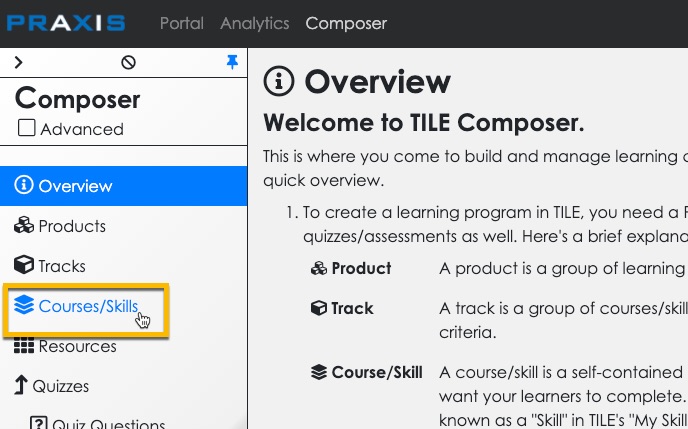
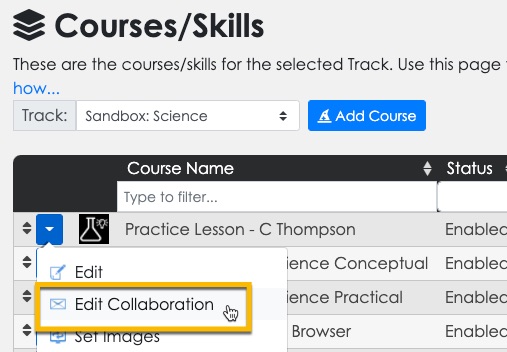
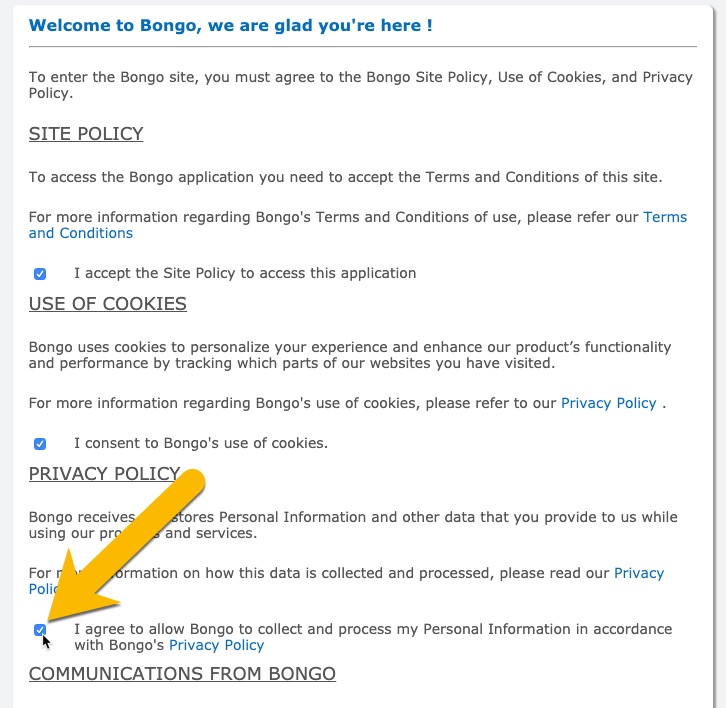

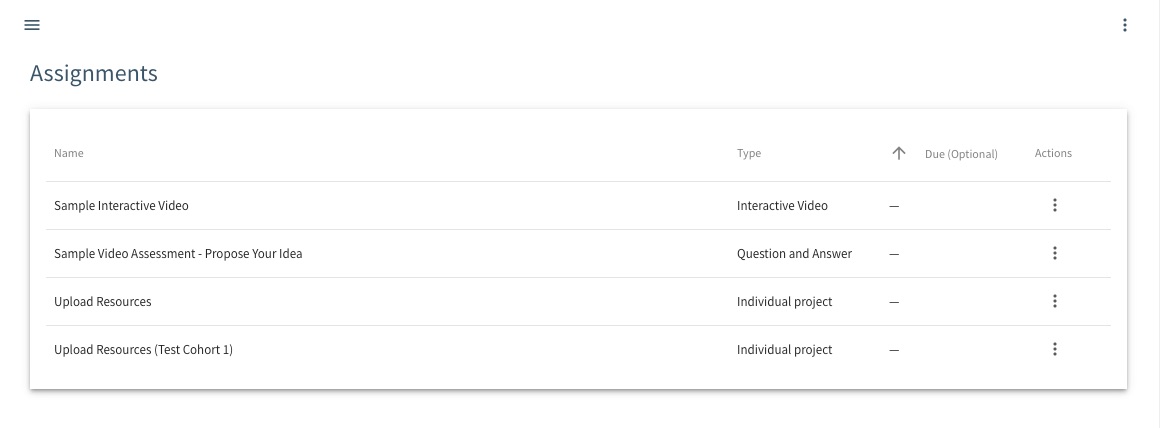
Create a Rubric
- Select the menu icon at the upper left corner of the Collaboration Admin Page. Then select the Rubrics option.
- The Rubrics page opens. Select the ‘+’ icon at the bottom right corner of the page and then select the ‘+’ icon again to ‘Create rubric.’
- The Create Rubric panel opens. Give your rubric a name.
- Write a criterion/objective for each row of the rubric.
- Write a descriptive label for each scoring column of the rubric.
- Assign a default point value for each scoring column. (Point values will need to be a whole number; decimals are not permitted.)
- [Optional] Write descriptions in for each scoring cell, for each criterion in the rubric. (You can also enter a point value in a scoring cell if you wish to override the default point value for the column.)
- To add or remove a row or column, use the ‘+’ or ‘trash’ icons.
- Select Save when you are finished.
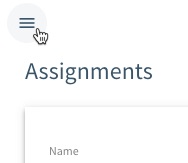


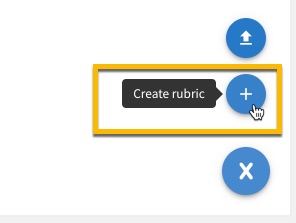

Import a Rubric
- The Rubrics page also gives you the option to import a rubric. Select the ‘+’ icon at the bottom right corner of the page and then select the ‘up arrow’ icon to ‘Import rubric.’
- The Import Rubric panel opens. Follow the instructions on this page to convert your existing rubric into a format that can be imported.
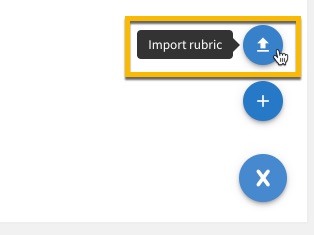
 (back to top)
(back to top)
Step 2 - Create the Q&A Activity
Watch this video for a quick example of how to create the Q&A activity. You can also follow the Step-by-Step instructions below.
Step-by-Step Instructions
- (If you’re still on the Rubrics page) select the menu icon at the upper left corner of the page, then select the Assignments option.
- The Assignments page opens. Select the ‘+’ icon at the bottom right corner of the page and then select the ‘chat bubble’ icon to ‘Create question & answer assignment.’
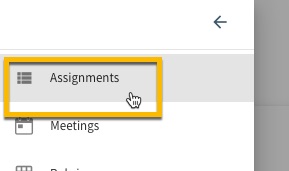
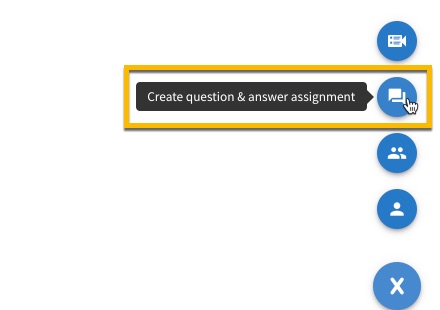
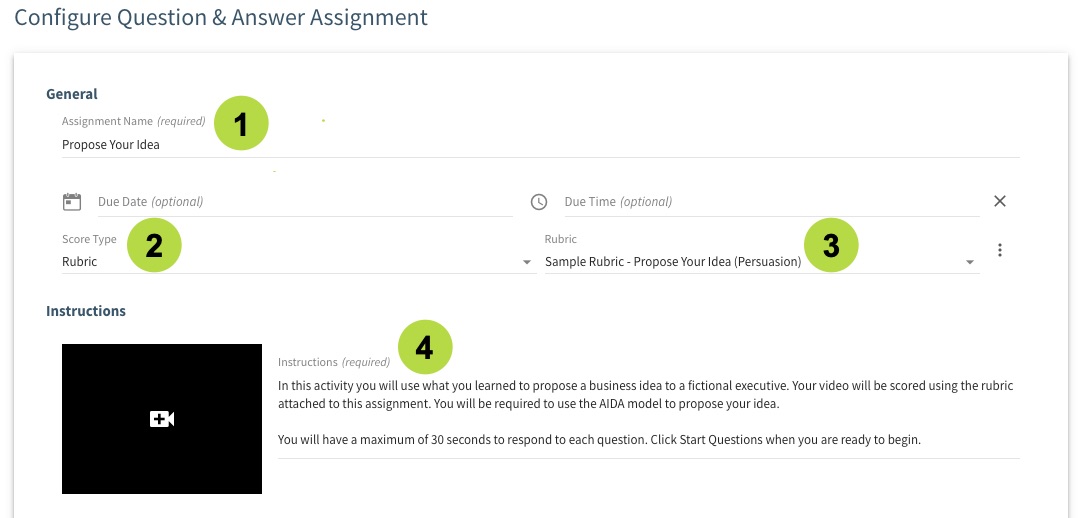
- The Create Question & Answer Assignment panel opens. Give your activity a name.
- Select a Score Type in the drop-down menu:
- Rubric – instructor will score learner submissions by rubric category for a total score. The score you select will then be the score out of the total number of points allowed.
- Percentage – instructor will score the activity from 0 - 100.
- Pass/Fail – instructor will give the activity a pass (100%) or fail (0%).
- Auto Pass - automatically gives learners a 100% when they submit an answer. Learners who have not submitted will not have a score.
- Five Star – instructor will rate submissions with a 5-star rating scale. Each star is worth 20%. Ex: If you select 4 stars, then the learner will get an 80%.
- If you’re using a rubric, select the rubric you created in the Rubric drop-down menu. (If you haven’t created a rubric yet, refer to Step 1 in this tab.)
- Write Instructions for the activity. (You have the option to record or upload a video here as well.)
- Write Question Text for each question in the activity.
- You also have the option to add a prompt video for each question – just click the +video icon and follow the prompts to record or upload a video.
- Select the ADD QUESTION button to add more questions to the activity. (You can add up to 20 questions.)
- Click the ‘trash’ icon to remove a question. Click the ‘handle’ icon to drag a question to a different position. (NOTE: Under each question, you can mark the question as active or not. If left unchecked, the question will not be asked when the user launches the activity.)
- Select the Recording Mode options you want available to the learners: camera only, or camera plus screen recording.
- Set the parameters for the video recording time. The Delay is the time between the end of the question and the time the learner’s camera will automatically start to record. Select the Min Record Time and Max Record Time (in seconds) to set the amount of time allowed for the learner’s response.
- Set the Peer Review toggle to on or off, based on your preference. (Peer review allows learners to review their peers’ video responses.) If you want to use Peer Review, set the Number of Required Reviews as well. This is the number of reviews that each learner is required to submit in order to receive credit for the activity (set this number to zero if the peer review is optional). You can further configure the Peer Review in the ‘Advanced’ settings (see below).
- Select the SHOW ADVANCED button at the bottom right corner of the panel.
- Enter Post-Submission Instructions for the learner.
- In the ‘Answer Settings’ section, you can select a checkbox to activate Allow Retake, which allows learners to retry their video responses if they choose. You can also activate Record Reaction, which will automatically record the learner during the question prompt video. If you have more than one question prompt, you can activate Random Question Mode to display the questions in random order.
- Enter advanced settings for Peer Review as desired:
- To have the system automatically select the least reviewed submission for the learner to review, select Automatic (system selected). This ensures that reviews are equally distributed among all submissions. This option allows students to review a submission completely before advancing to their next peer. To allow the learner to choose the submissions they review from a drop-down menu, select Manual.
- To let learners review peer submissions before they submit their own video responses, select Allow peer review before submission.
- To mask the reviewer's name from the submitter, check Conceal reviewer identity. Reviewers will be identified as Anonymous Review 1, 2, etc. This option does not mask any personal information included in text or video comments. To mask the submitter's name from any peer reviewers, check Conceal submitter identity. This option does not mask any personal information included in submissions such as videos, documents, and meetings.
- Next, to give learners the opportunity to score their peers’ videos, select Review Type and choose Five star or Assignment rubric*. Learners can give comments in addition to assigning these scores. If you choose None, you are allowing learners to only give comments for peer review (without 5 Star Ratings or Rubric Scores). If you would like to turn peer review off, simply click on the pink toggle button located on the top right corner of the Peer Review settings box. *The rubric option will only be available if you are grading with a rubric. Learners will use the same rubric as you.
- To require peer review to be completed by a deadline, you can assign a Due Date/Time.
- Enter a Deep Linking Identifier for the assessment, then select the Score Sync checkbox. IMPORTANT: The “Deep Linking Identifier” is the ID that will link the assessment to resource instance in the course. Copy this ID for Step 3 – Map Assessment to a Lesson Resource. (The ID should be all lower case without spaces.)
- Select Save when you are finished configuring the assessment.
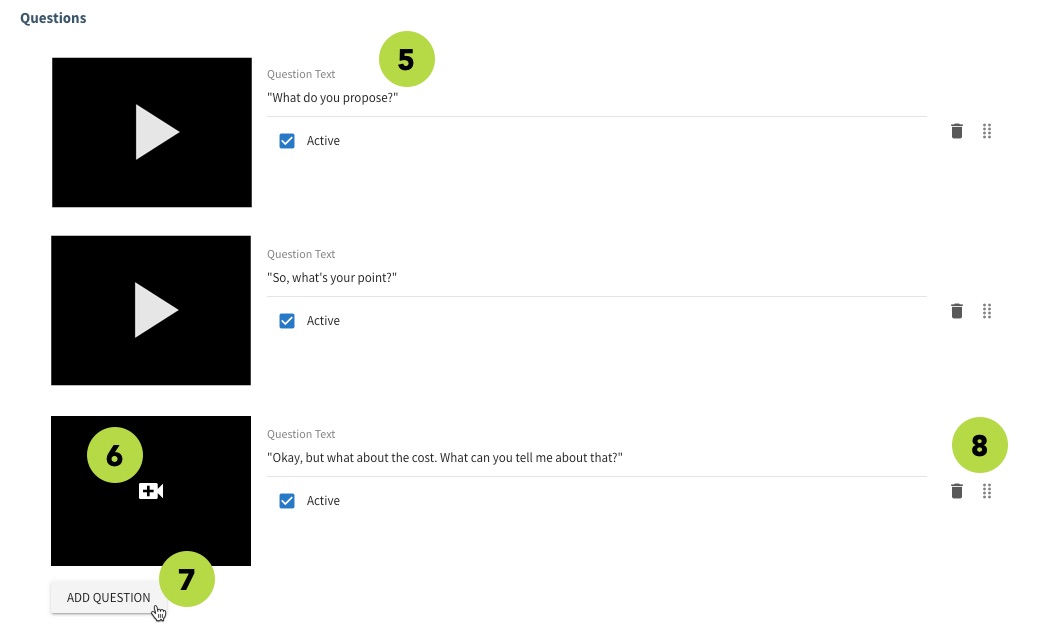
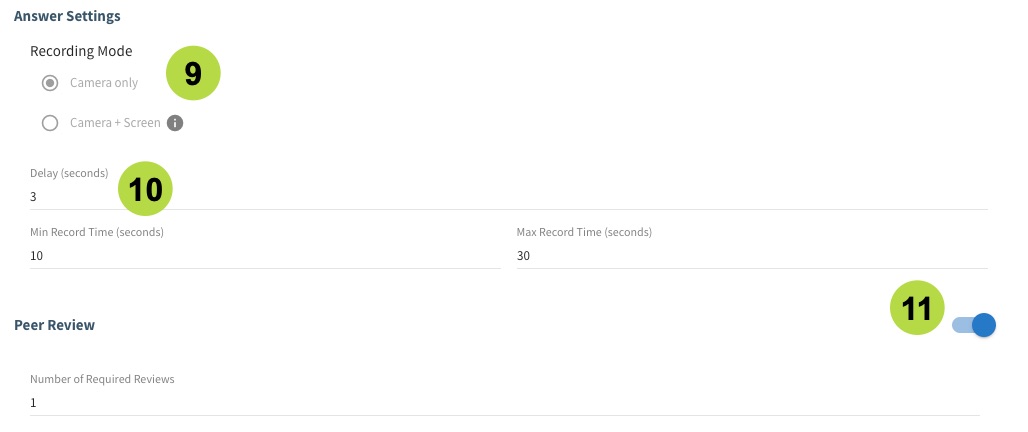
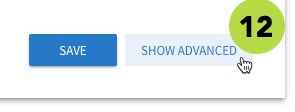
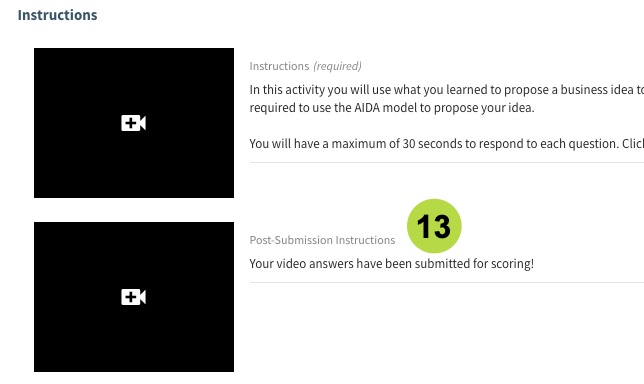

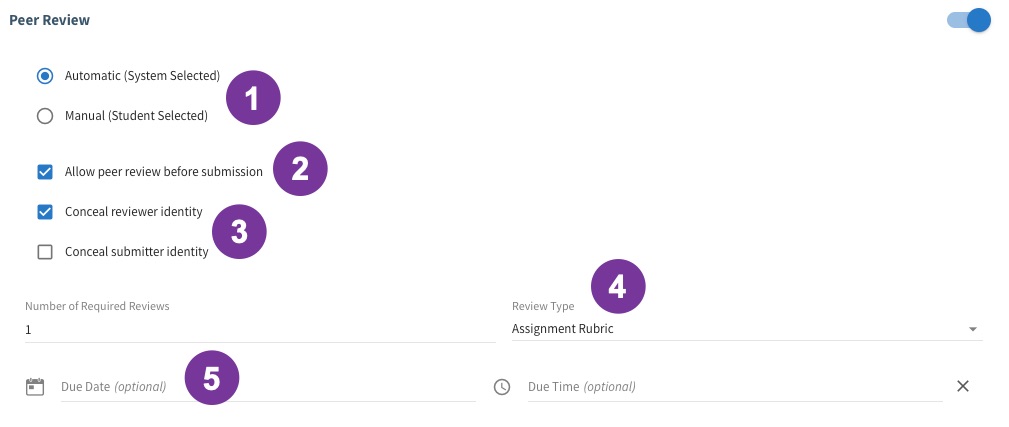

Your new activity is displayed in the Assignment list. You’re almost done!
 (back to top)
(back to top)
Step 3 - Map Activity to a Lesson Resource
Your activity is all set up, but there's one last step. You need to map it to a resource so your learners will be able to see and access it. Watch this video for a quick example of how to map a video collaboration activity to a resource. You can also follow the Step-by-Step instructions below.
Step-by-Step Instructions
- Select the Close button at the top of the Collaboration Admin Page.
- Select the Resources option in the side menu.
- The Resource Mapper page loads. Make sure it is the right page for your practice lesson/course by looking at the breadcrumbs at the top of the screen. If your lesson/course isn't displayed, click the last breadcrumb to open the course selection screen and then select your lesson. Then select the Add Resource button.




- The Resource settings panel opens. Give your activity a name.
- Set the Position for the activity so it displays in the right order in the lesson.
- Set the Resource Type to "Activity."
- Enter the “Deep Linking Identifier” ID from Step 2 into the URL/Filename field.
- Set the Resource Format to "Collaboration Video."
- Set the Duration for the activity.
- Set the Completion Logic to "Externally Scored."
- Set the Passing Threshold for the activity.
- Enter a brief Description of the activity. Learners will see this description in the course interface.
- Select Save when you are ready.
- The activity appears in the resource list, but is not yet mapped. Click the empty cell next to the activity name to activate it.
- Click OK in the confirmation box. The activity is now enabled and ready for your learners!


If you would like a preview of what your learners will experience when they do the activity, continue to the next section.
(back to top)Check Learner Access to Activity
Follow the steps below to check the appearance and behavior of your video collaboration activity to learners.
Step-by-Step Instructions
- Exit Composer by selecting the Portal option at the top of the screen.
- Locate and select your activity in the interface. Then click the Play button to launch it.
- Go through the video collaboration activity as a learner would and check on wording, appearance, behavior, etc. Then revise your activity settings if necessary.
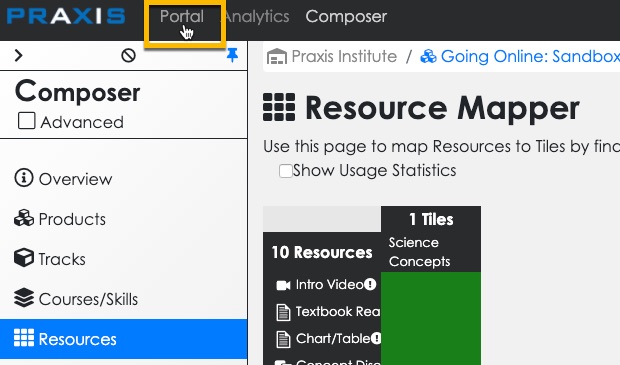
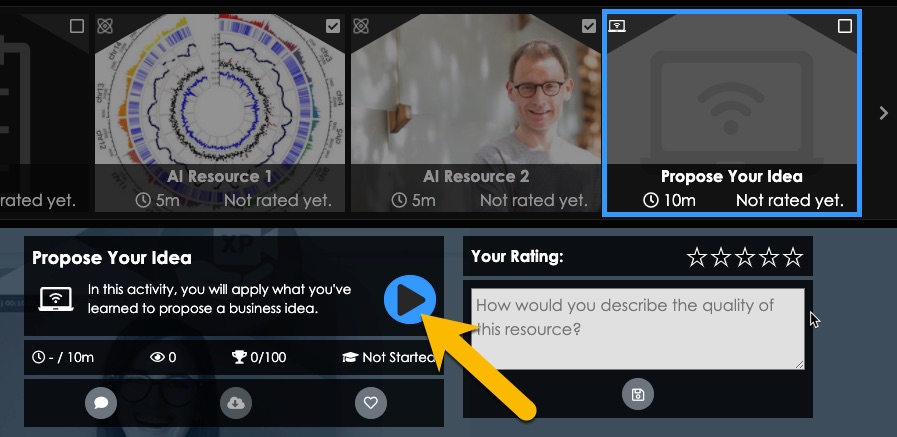
More Info
Click here for more information about how to use the Q&A video activity type.
Overview
There are two steps to create an “Individual Project” video collaboration activity in TILE Composer:
- Create the Individual Project activity
- Map the activity to a lesson resource
Click each section below for step-by-step guidance.
Step 1 - Create the Individual Project Activity
Watch this video for a quick example of how to create the Individual Project. You can also follow the Step-by-Step instructions below.
Step-by-Step Instructions
Access the Collaboration Admin Page
- Select the Courses/Skills option in the side menu.
- Select the context menu for your practice lesson, and then select the Edit Collaboration option.
- (If this is your first time accessing the Collaboration Admin Page) select the “I agree…” checkbox to agree to the Bongo plugin terms of use. Then select OK at the bottom of the agreement.
- The Collaboration Admin - "Assignments" page displays. Scroll down on the page for the next step.
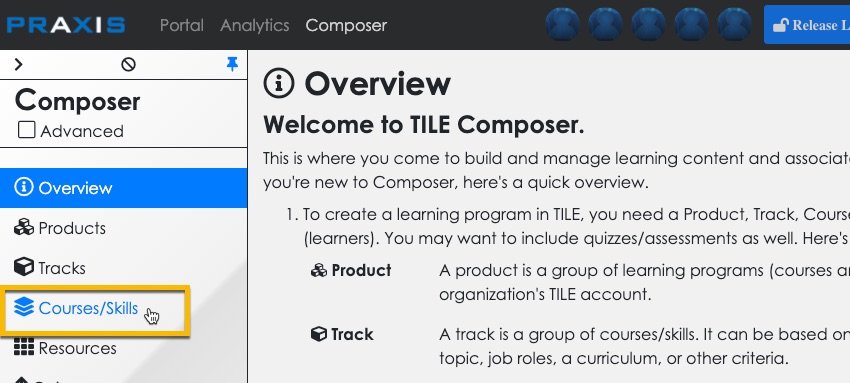
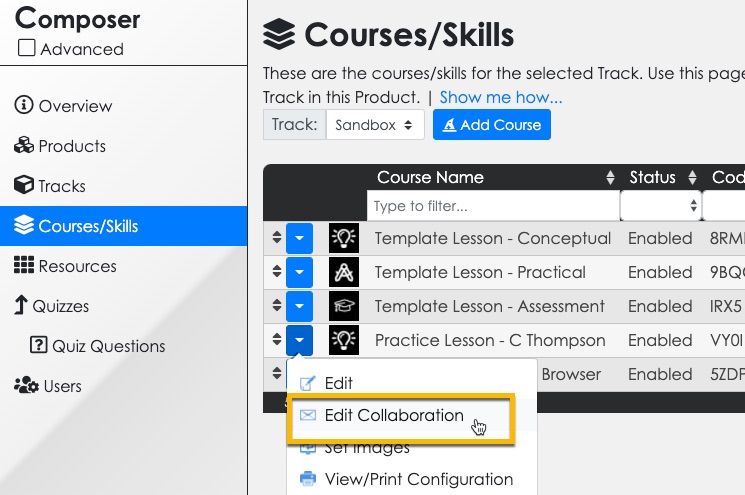


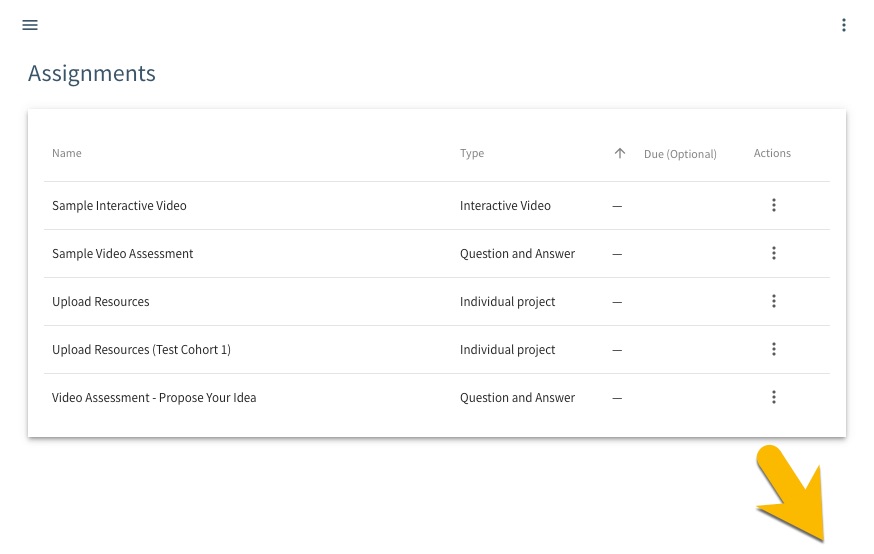
Create Individual Project
Select the ‘+’ icon at the bottom right corner of the page and then select the ‘person’ icon to ‘Create question & answer assignment.’

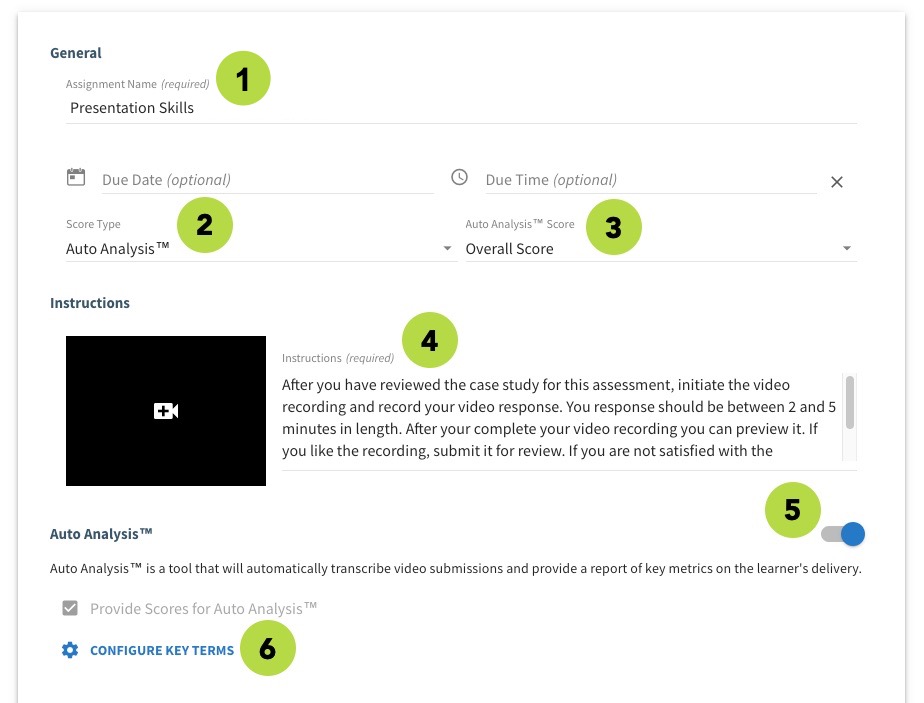
- The Individual Assignment panel opens. Give your activity a name.
- Select a Score Type in the drop-down menu. We recommend using the “Auto Analysis” option to auto-grade the activity using artificial intelligence (AI). Other score type options for a formal assessment include Rubric, Percentage and Pass/Fail. Auto Analysis™ is an automated reporting feature that provides deeper insight into an individual’s performance and progress. By generating metrics like rate of speech, speech clarity, and use of filler words, Auto Analysis™ gives the presenter a better sense of what to focus on and helps the evaluator provide more targeted feedback. If this score type is selected, the Auto Analysis™ overall score for the submitted video will be used as the score and does not require any user with an instructor role to assign the score. Instructors are able to manually override the automatic score within the Scorebook if desired.
- If you’re using Auto Analysis, select “Overall Score” for the Auto Analysis Score option.
- Write Instructions for the activity. (You have the option to record or upload a video here as well.)
- Select the Auto Analysis toggle to activate that feature.
- Select the 'Configure Key Terms' option to enter terms that are required for the learner to use in their video recording.
- The ‘Auto Analysis Key Terms’ panel opens. Enter each key term and then click ADD.
- Entered terms will display in a list. For each term you can specify the number of required Occurrences of that term. (Select the ‘trash’ icon to remove a term.)
- Select OK when ready.
- Select the SHOW ADVANCED button at the bottom right corner of the panel.
- Enter Post-Submission Instructions for the learner to follow.
- Enter a Deep Linking Identifier for the activity, then select the Score Sync checkbox. IMPORTANT: The “Deep Linking Identifier” is the ID that will link the activity to a resource instance in the course. Copy this ID for Step 2 – Map Activity to a Lesson Resource. (The ID should be all lower case without spaces.)
- Select Save when you are finished configuring the activity.
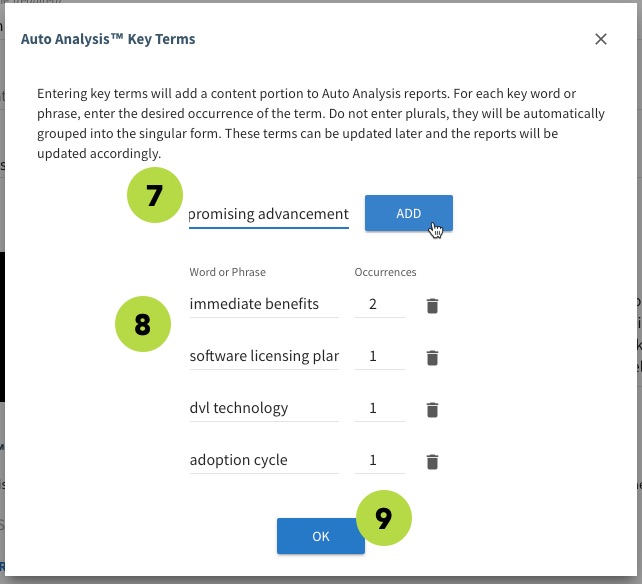
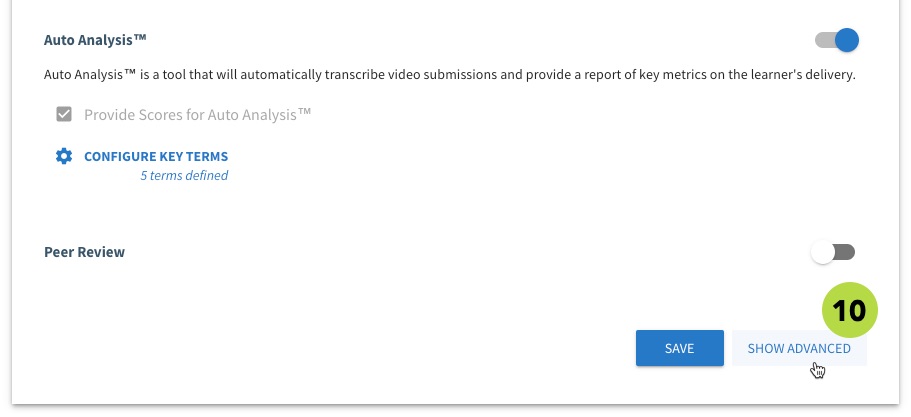


Your new activity is displayed in the Assignment list. You’re almost done!
 (back to top)
(back to top)
Step 2 - Map Activity to a Lesson Resource
Your video collaboration activity is all set up, but there's one last step. You need to map it to a resource so your learners will be able to see and access it. Watch this video for a quick example of how to map a video activity to a resource. You can also follow the Step-by-Step instructions below.
Step-by-Step Instructions
- Select the Close button at the top of the Collaboration Admin Page.
- Select the Resources option in the side menu.
- The Resource Mapper page loads. Make sure it is the right page for your practice lesson/course by looking at the breadcrumbs at the top of the screen. If your lesson/course isn't displayed, click the last breadcrumb to open the course selection screen and then select your lesson. Then select the Add Resource button.



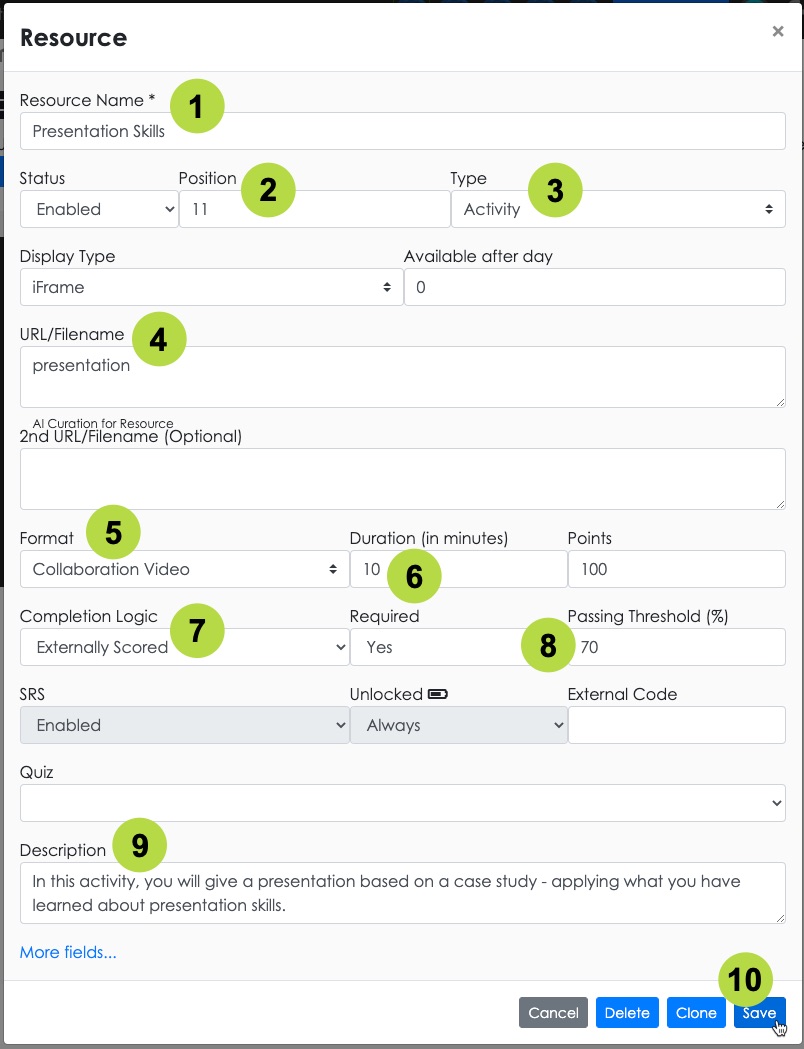
- The Resource settings panel opens. Give your activity a name.
- Set the Position for the activity so it displays in the right order in the lesson.
- Set the Resource Type to "Activity."
- Enter the “Deep Linking Identifier” ID from Step 1 into the URL/Filename field.
- Set the Resource Format to "Collaboration Video."
- Set the Duration for the activity.
- Set the Completion Logic to "Externally Scored."
- Set the Passing Threshold for the activity.
- Enter a brief Description of the activity. Learners will see this description in the course interface.
- Select Save when you are ready.
- The activity appears in the resource list, but is not yet mapped. Click the empty cell next to the activity name to activate it.
- Click OK in the confirmation box. The activity is now enabled and ready for your learners!


If you would like a preview of what your learners will experience when they do the activity, continue to the next section.
(back to top)Check Learner Access to Activity
Follow the steps below to check the appearance and behavior of your video collaboration activity to learners.
Step-by-Step Instructions
- Exit Composer by selecting the Portal option at the top of the screen.
- Locate and select your activity in the interface. Then click the Play button to launch it.
- Go through the assessment activity as a learner would and check on wording, appearance, behavior, etc. Then revise your activity settings if necessary.

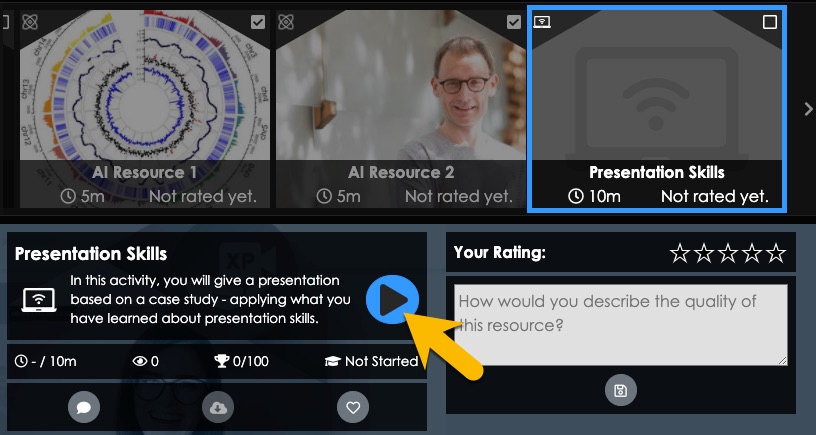
More Info
Click here for more information about how to use the Individual Project video activity type.
Overview
There are two steps to create a “Interactive Video" activity in TILE Composer:
- Create the Interactive Video activity
- Map the activity to a lesson resource
Click each section below for step-by-step guidance.
Step 1 - Create the Interactive Video Activity
Watch this video for a quick example of how to create an Interactive Video. You can also follow the Step-by-Step instructions below.
Step-by-Step Instructions
Access the Collaboration Admin Page
- Select the Courses/Skills option in the side menu.
- Select the context menu for your practice lesson, and then select the Edit Collaboration option.
- (If this is your first time accessing the Collaboration Admin Page) select the “I agree…” checkbox to agree to the Bongo plugin terms of use. Then select OK at the bottom of the agreement.
- The Collaboration Admin - "Assignments" page displays. Scroll down on the page for the next step.





Create Interactive Video
Select the ‘+’ icon at the bottom right corner of the page and then select the ‘video quiz’ icon to ‘Create interactive video assignment.’
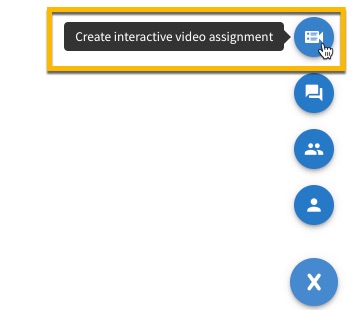

- The Create Interactive Video Assignment panel opens. Give your activity a name.
- Write Instructions for the activity. (You have the option to record or upload a video here as well.)
- Click the '+ video' icon in the interactive video section. You must add a video before you can add the questions.

- Select a method to add a video. Select RECORD VIDEO to record a webcam or screenshare video. Select UPLOAD VIDEO to use a previously-recorded video. (Ignore the ‘SELECT FROM RESOURCES’ option.) Follow the on-screen prompts to record or upload your video.
- After adding the video, you will see a “video is processing message.” You can add questions for the video when it is finished processing.

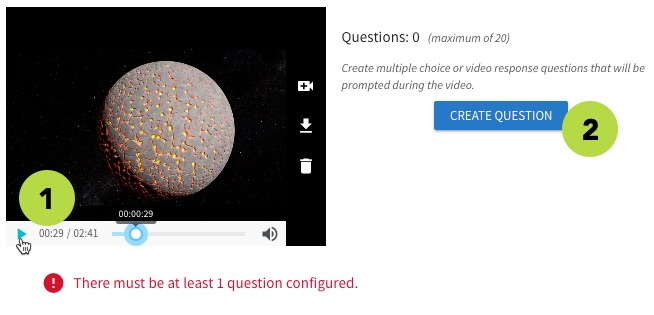
- To add a question, first use the play button or scrollbar to navigate to the point in the video where you want to ask a question.
- Then select the CREATE QUESTION button.
- Select the Question Type – either Multiple Choice (user will select an answer) or Video Response (user will record a video answer and submit it).
- Enter the Question.
- Enter two or more answer Options. (The first answer in the list is always the correct one.)
- (Optional) Enter feedback text or a hint for each answer option. You can click the ‘trash’ icon to remove an answer option.
- Select OK when you are ready.
- Repeat steps 2 through 7 for each question in the activity. (You can add up to 20 questions.)
- Enter the score weight for each question. (The weight total must equal 100%.) You can click the menu (3 dots) for a question to edit or delete it.
- Select the SHOW ADVANCED button.
- Select the Deep Linking toggle to enable it.
- Enter a Deep Linking Identifier for the activity, then select the Score Sync checkbox. IMPORTANT: The “Deep Linking Identifier” is the ID that will link the activity to resource instance in the course. Copy this ID for Step 2 – Map Activity to a Lesson Resource. (The ID should be all lower case without spaces.)
- Select Save when you are finished configuring the activity.
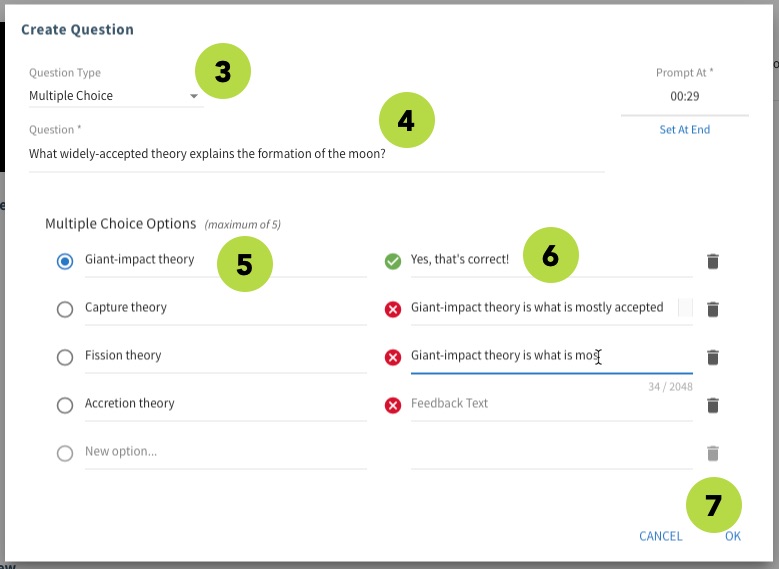



Your new activity is displayed in the Assignment list. You’re almost done!
 (back to top)
(back to top)
Step 2 - Map Activity to a Lesson Resource
Your activity is all set up, but there's one last step. You need to map it to a resource so your learners will be able to see and access it. Watch this video for a quick example of how to map a video activity to a resource. You can also follow the Step-by-Step instructions below.
Step-by-Step Instructions
- Select the Close button at the top of the Collaboration Admin Page.
- Select the Resources option in the side menu.
- The Resource Mapper page loads. Make sure it is the right page for your practice lesson/course by looking at the breadcrumbs at the top of the screen. If your lesson/course isn't displayed, click the last breadcrumb to open the course selection screen and then select your lesson. Then select the Add Resource button.



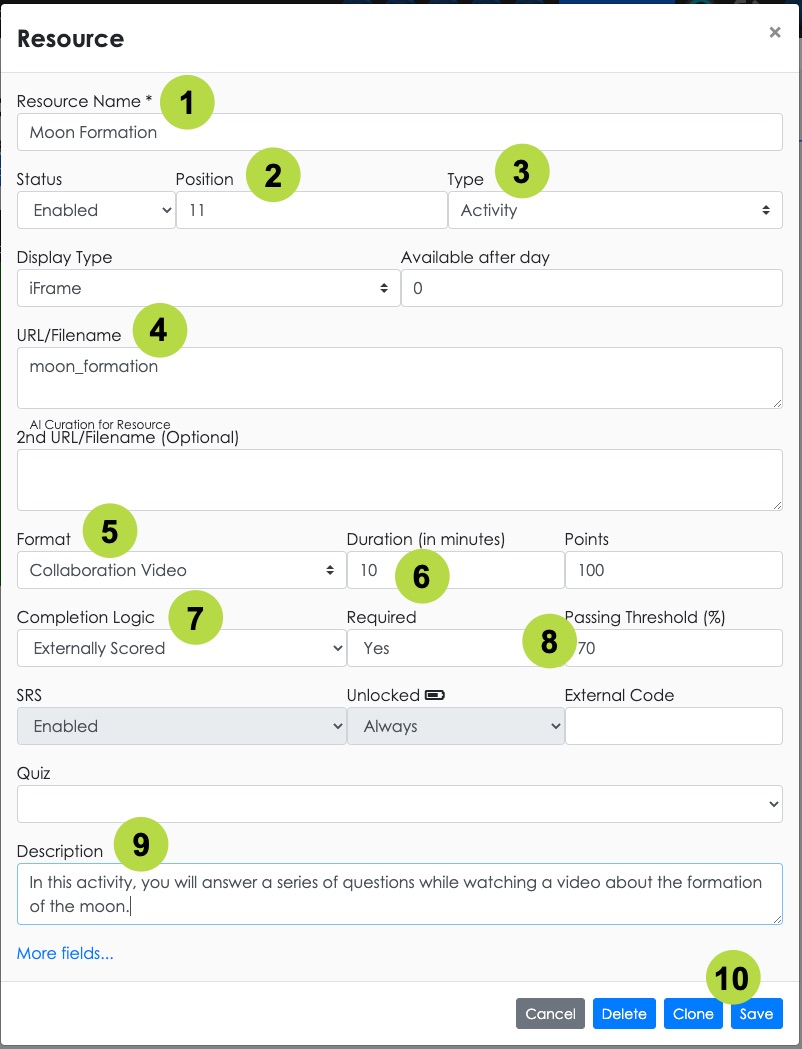
- The Resource settings panel opens. Give your activity a name.
- Set the Position for the activity so it displays in the right order in the lesson.
- Set the Resource Type to "Activity."
- Enter the “Deep Linking Identifier” ID from Step 1 into the URL/Filename field.
- Set the Resource Format to "Collaboration Video."
- Set the Duration for the activity.
- Set the Completion Logic to "Externally Scored."
- Set the Passing Threshold for the activity.
- Enter a brief Description of the activity. Learners will see this description in the course interface.
- Select Save when you are ready.
- The activity appears in the resource list, but is not yet mapped. Click the empty cell next to the activity name to activate it.
- Click OK in the confirmation box. The activity is now enabled and ready for your learners!

If you would like a preview of what your learners will experience when they take the activity, continue to the next section.
(back to top)Check Learner Access to Activity
Follow the steps below to check the appearance and behavior of your video activity to learners.
Step-by-Step Instructions
- Exit Composer by selecting the Portal option at the top of the screen.
- Locate and select your activity in the interface. Then click the Play button to launch it.
- Go through the video activity as a learner would and check on wording, appearance, behavior, etc. Then revise your activity settings if necessary.


More Info
Click here for more information about how to use the Interactive Video activity type.